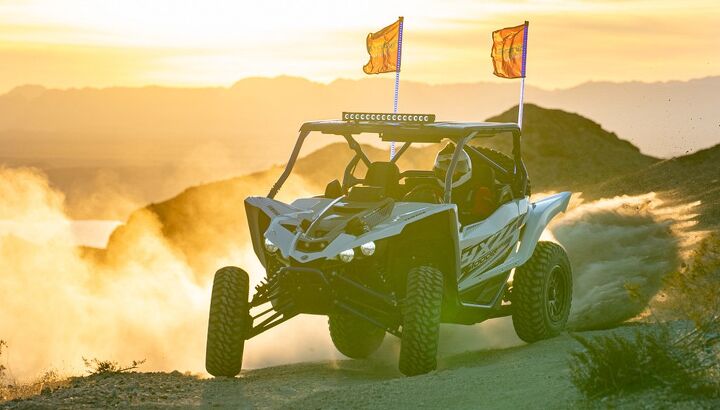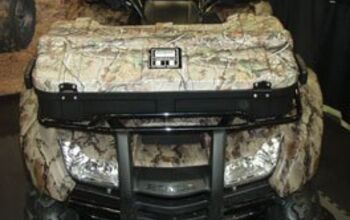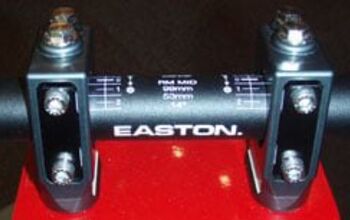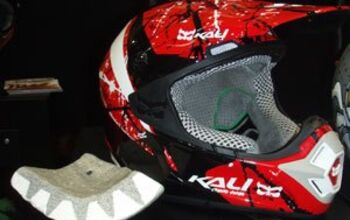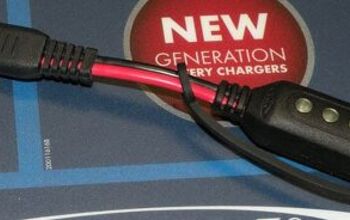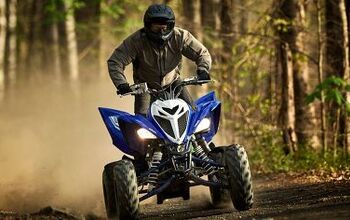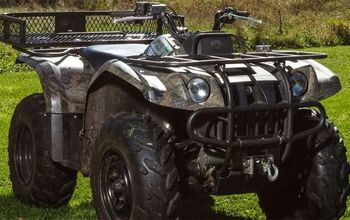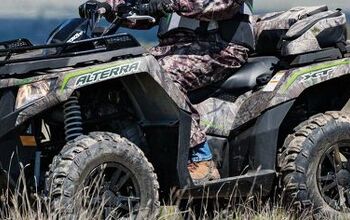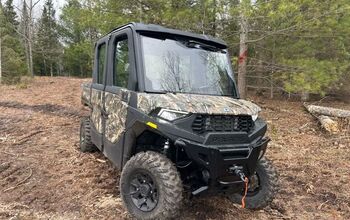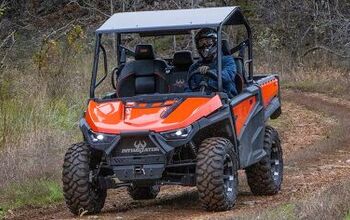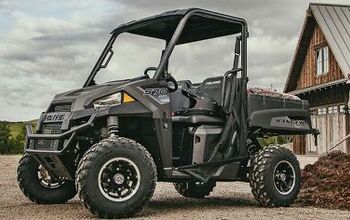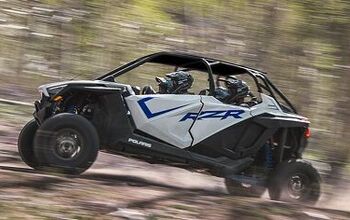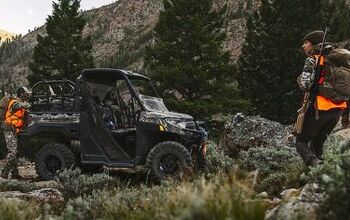How To Shift a Manual Transmission in a UTV + Video
Have you been hesitant about buying a manually shifted UTV? Do you want a more engaging off-road experience on the trail? Don’t you want paddle shifters with Launch Control built in from the factory?!
Back to those questions in a second…
It seems like so much time has passed since the manual transmission was “a thing” in our society. Back in the 1990s, and ever since the automobile was born, the manual transmission is something that almost every driver had to learn how to operate. It’s not that automatic transmissions weren’t around, but manual transmissions offered a more direct and engaging driving experience than an automatic. Plus, manual transmission were cheaper options. In the muscle car era of the 1960s and 70s, manuals were the only way to go. The car world has changed since these golden times, offering up only a handful of manually shifted transmissions. To be fair, auto trannies have come a long way these days.
However, the UTV and off-road world is still holding onto one of the most driver-centric pieces of equipment – the manual transmission! In the mainstream sport UTV market, both Yamaha and Honda UTVs have the ability to shift manually. In fact, only Yamaha has a true-to-the-core manual with a third clutch pedal (remember what that is?!) in its YXZ1000R, and they also have a Sport Shift (SS) version, which has an automatic clutch with paddle shifters. It is the same story with the Honda Talon lineup, except even its DCT transmission has a fully automatic mode. Manual transmissions allow the operator to choose the right gear for the right situation, always be in the meat of the powerband, and not worry about breaking belts while out on the trail. There are definitely a lot of pros to having a UTV with a gearset in it. And, frankly, we love a good transmission that we’re able to shift and decide what gear we want to be in and how many RPMs we want to be pulling on a particular trail. So, back to our original questions… Have you been hesitant about buying a manually shifted UTV? Do you want a more engaging off-road experience on the trail? And, don’t you want paddle shifters with Launch Control built in from the factory?! The purpose of this article is to show you the basics about Learning To Shift, and we’re going to use one of the most engaging and fun-to-drive UTVs on the market today as our test vehicle – the Yamaha YXZ1000R SS (Sport Shift version). We took a novice off-roader, who has previous manually shifting experience with street bikes and automobiles, and showed her the ropes in an off-road vehicle.
Basic Control Overview
When comparing a manually-shifted UTV to an automatic or CVT-driven UTV, the controls aren’t much different. In the case of the Yamaha YXZ1000R SS, which again is manually shifted but has an automatic clutch, there is a drive mode selector that allows you to switch the transmission from Neutral to either Drive or Reverse. Instead of a Park gear, there is a parking brake that is easily accessible on the center tunnel. Then you have the magic levers, aka the paddle shifters! With an automatic clutch in the transmission, there is no third clutch pedal to worry about, just an up paddle shifter on the right side of the steering wheel and down paddle shifter on the left side of the steering wheel. The auto clutch takes care of all the clutch engagements for you, “automatically”. In total, there are five gears in the YXZ’s transmission, which allows you to go from 0 to well over 70 mph. Your feet control the gas and brake, just as you would in a regular car.
In other words, there aren’t any “different” switches or pedals that you have to get used to in this type of off-road vehicle. There are still just two pedals for your feet – gas and brake. The switchgear is the same that you would find in a regular automobile. Is it just like driving a car on the street? Absolutely. Just put it into Drive, ease onto the throttle, and you’re headed down the trail…
Takeoffs and Stopping
As I just mentioned, the switchgear on the YXZ is all the same as a normal car, so there aren’t any special instructions when it comes to takeoffs or stopping. To takeoff from a stop, all you have to do is follow this simple procedure: foot on the brake, release the parking brake, shift into Drive (left and forward on the gear selector), foot off the brake, ease onto the throttle. If Reverse needs to be activated, simply shift into Reverse gear (left and backward on the gear selector) by following the same procedure. Again, no matter which gear you are in when taking off from a stop, an easy throttle foot will smoothly engage the clutch and get you rolling.
When it comes to slowing down, Yamaha relieved one of the biggest fears that drivers have when stopping – stalling the vehicle. There isn’t a clutch pedal to depress in the YXZ1000, so you never have to worry about stalling it. If the YXZ transmission senses that you are going too slow for the gear you have selected, then it will downshift for you to prevent stalling. And, best of all, if you have to stop abruptly on the trail and don’t think of pulling the downshift paddle shifter, then the YXZ will do it automatically and prevent a stall, even when you fully lock up the wheels to stop. The beauty of this system is that you can either downshift if you want by pulling the paddle, or you can let the machine do it for you. There are reasons to do both, and I’ll explain more of that in a minute… However, the takeaway from this is that you don’t have to worry about the vehicle stalling on you when coming to a stop, or when starting for that matter. This keeps you comfortable and confident behind the wheel.
Shifting Gears & Finding The “Meat” Of The Powerband
So, you already know that this machine comes with paddle shifters! Shifting gears with these is really easy, especially since the paddles are large (covering a great amount of area just behind the steering wheel), built solid out of metal, and are stationary so you always know which paddle you’re pulling.
The beauty of being able to shift gears is you can always determine the RPM you want to be at when driving. If you want to cruise and don’t want a bunch of engine noise behind your head, then you can “short shift” the transmission – this means that you are shifting to a higher gear and lugging the engine at a low RPM – so that the engine isn’t making a lot of noise. In an opposite manner, the YXZ engine can absolutely wail to about 10,500 RPM, and you can pull full throttle upshifts if you want. Yes, it is thrilling!
At the end of the day, you’re probably not going to be pulling full throttle upshifts all day long, but you could if you wanted to. Since you have a manually shifted transmission in this Yamaha, you’re going to want to practice finding the real “meat” of the powerband. What I mean by that is you’re going to want to find the places that the engine is making the most power – typically in between 6000 and 9000 RPM for a YXZ1000R – and keep the engine in that RPM range if you’re really trying to attack a trail. Having a manual transmission allows you to do this at all times, whether you’re in first gear or fifth gear.
Having a manual transmission also allows you to engage in driving techniques that a typical automatic transmission doesn’t, such as downshifting into corners to set the vehicle up the next straightway (or corner), or just downshifting to engage a more traditional form of engine braking when going down hills. Having the ability to downshift allows you to use the drivetrain of the vehicle to brake for you, giving you complete control of the vehicle.
One of the other benefits that I find with shifting gears is that I can hold a gear from one obstacle to the next. It doesn’t matter how many times you shift the YXZ1000R, but it is really nice to be able to have such a wide range of RPMs to run the vehicle. You can hold gears longer and stay in the meat of the powerband on different styles of trails and terrain.
The YXZ’s Shift Logic, aka “The Brains”
If we look at the latest shift logic from Yamaha, the YXZ1000R was significantly upgraded for the 2019 model year, and these changes will hold true for the foreseeable future. Again, the shift logic ensures that you cannot stall the YXZ when coming to an abrupt stop, and you don’t have to worry about downshifting the vehicle if you’re just starting out.
The other great thing about the revised shift logic, along with the lower gearing that was introduced for the 2019 model year, is that the YXZ can artfully get you up the steepest of obstacles. What I mean by that is it won’t allow you to just drag the clutch and heat it up when going up steep hills at low speed. The brain of the system senses that the clutch is being drug and automatically “bumps” the clutch to get the wheels spinning at a higher RPM (or spinning at all). This wheel spin allows you to get up and over obstacles.
Launch Control – as a great friend of mine likes to say, “It’s naughty!” Launch Control is a real thing that actually comes standard from the factory, and it is easily activated. Just come to a stop, pull the paddles in while you depress the brake, wait for the light to come on, floor it, and GO! Your friends will never look at you the same way after a thrill ride like this… Basically what I’m saying is that manually shifted vehicles are very smart these days.
Transmissions – The Nitty Gritty
No matter what UTV or ATV you buy, every one of them has a transmission. The beauty of the manual transmissions in the UTV market are that they don’t have a belt-drive. This is great for the trail because you don’t have to worry about carrying a spare CVT belt, and it’s the same amount of maintenance when you’re prepping your vehicle for the next trip. Oil changes are necessary; there is no getting around that.
The beauty of having a manually shifted transmission, again, is that you can build your confidence behind the wheel and always select the right gear for the terrain that you are riding. If you’re in the sand dunes, then you’ll be able to keep your momentum up easier by keeping your wheels spinning and the RPMs up. If you’re in a sticky situation on the trail and need less wheel spin, then you can achieve that by keeping the RPMs low.
This applies more to racers and people who really drive their machines hard, but you can always upgrade clutches and change the gearing in a transmission, too. This customization factor really appeals to people. It’s not that you can’t do this in a CVT-driven vehicle, but it is definitely a more involved process to get the weighting right for those types of clutches. An automatic clutch is just so effective.
Confidence In The Driver’s Seat
Maybe it’s the ability to always “be in the right gear”, or maybe it’s the ability to truly make the YXZ handle like you want it to in any situation. Either way, I’m of the opinion that a vehicle that makes you feel comfortable and confident in the driver’s seat is one that you should keep around. No matter who gets into the Yamaha YXZ’s driver’s seat, they settle into a vehicle that gives you the confidence to tackle any obstacle out on the trail. Maybe it’s the ability to find the right gear for any situation, or maybe it’s the overall ability to shift and enjoy a fast rip down your favorite open straight. Young, old, whoever, I haven’t met someone who truly doesn’t enjoy ripping around with paddle shifters in their hands.
Conclusion
The key to Learning To Shift is to first understand the basics, which are detailed out here. Get to the point where you are smooth on your takeoffs and you’re understanding where to shift in the meat of the powerband. Then keep evolving your skills to where you can upshift/downshift at specific times to keep your momentum up and fly through the trails. When you couple these shifting abilities with the excellent handling traits in a vehicle like the Yamaha YXZ1000R, you’re in for a thrill ride every time you get behind the wheel!
As always, be safe on the trail, and we’ll see you out there!
More by Casey Cordeiro



